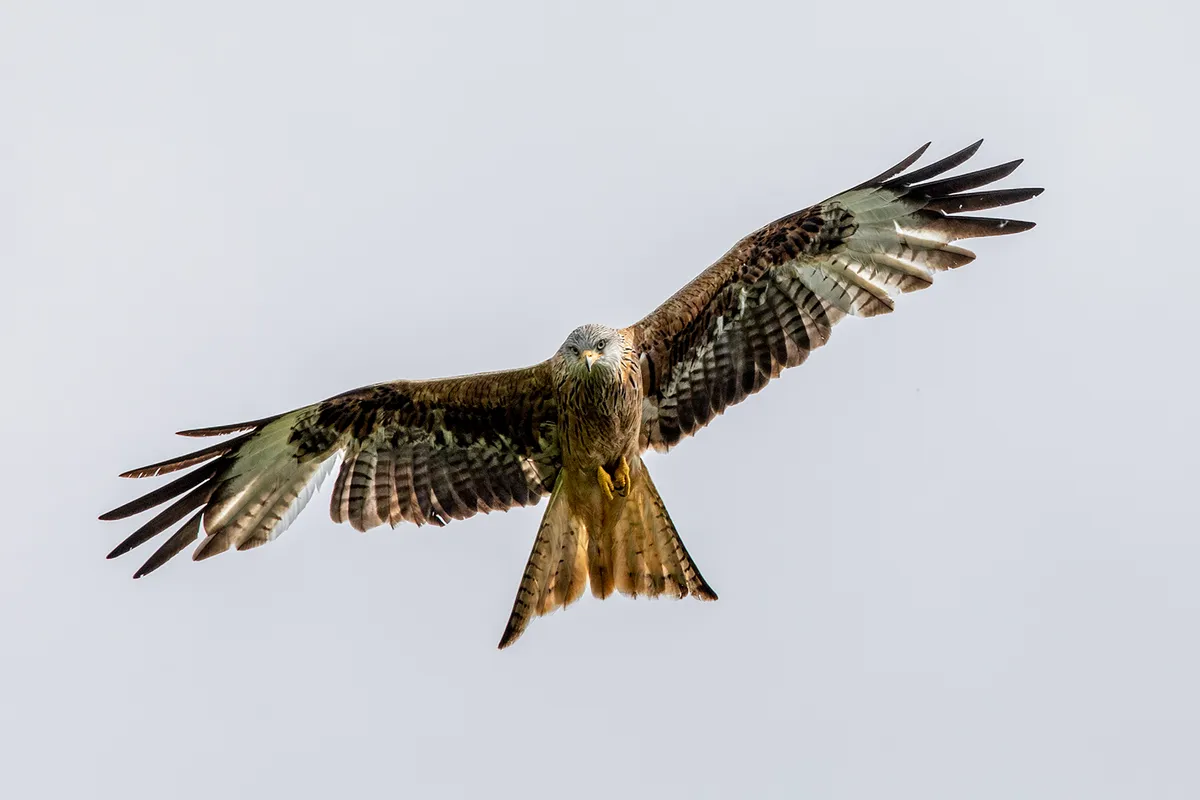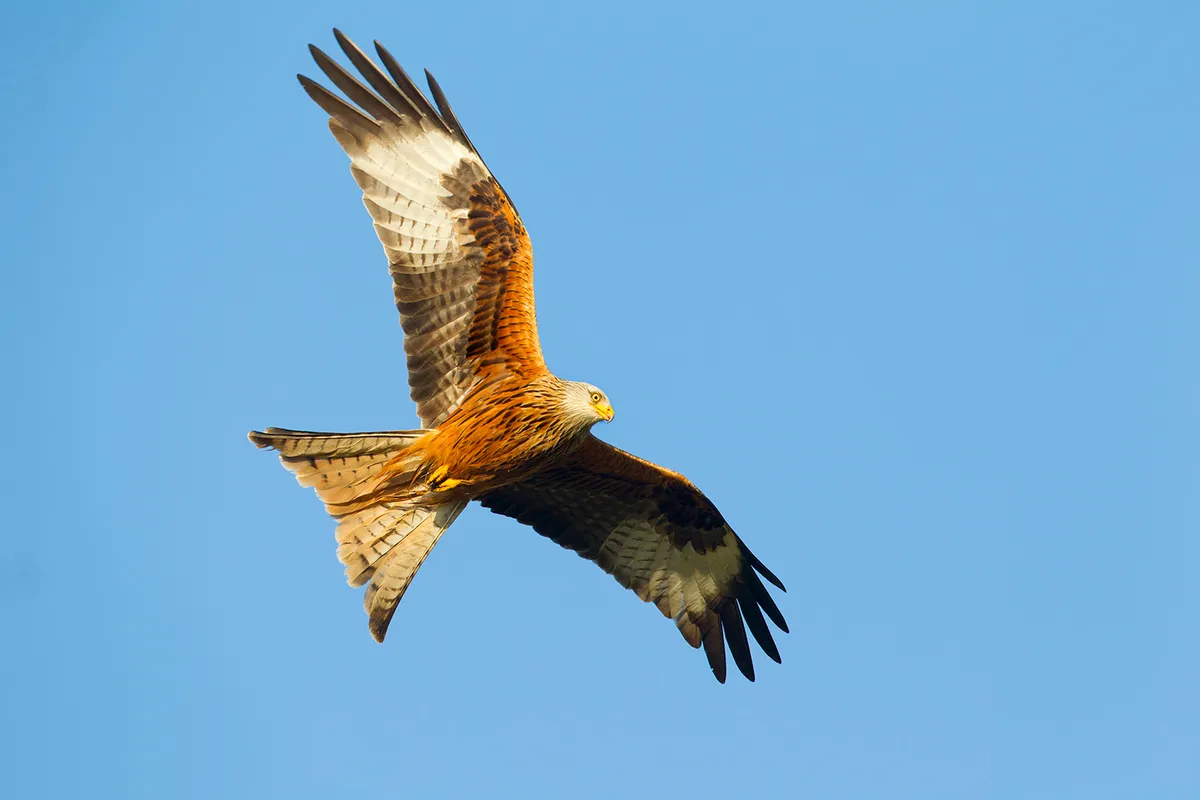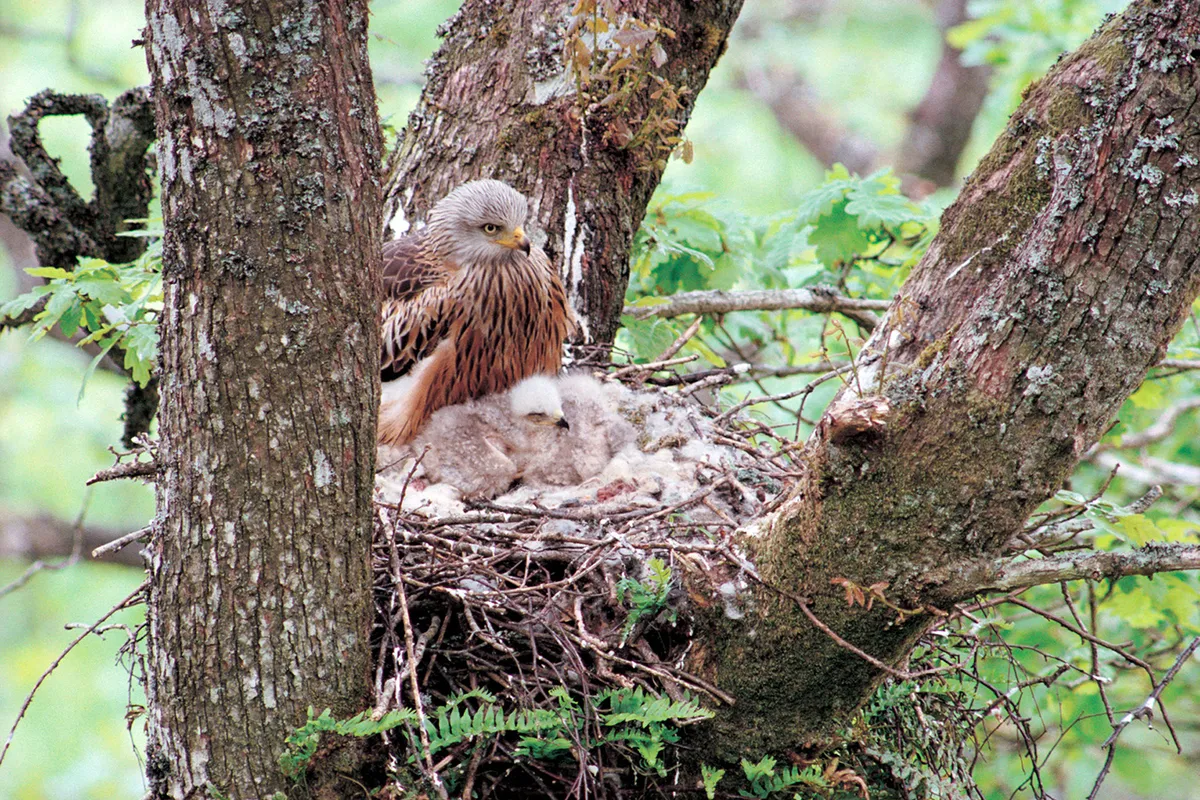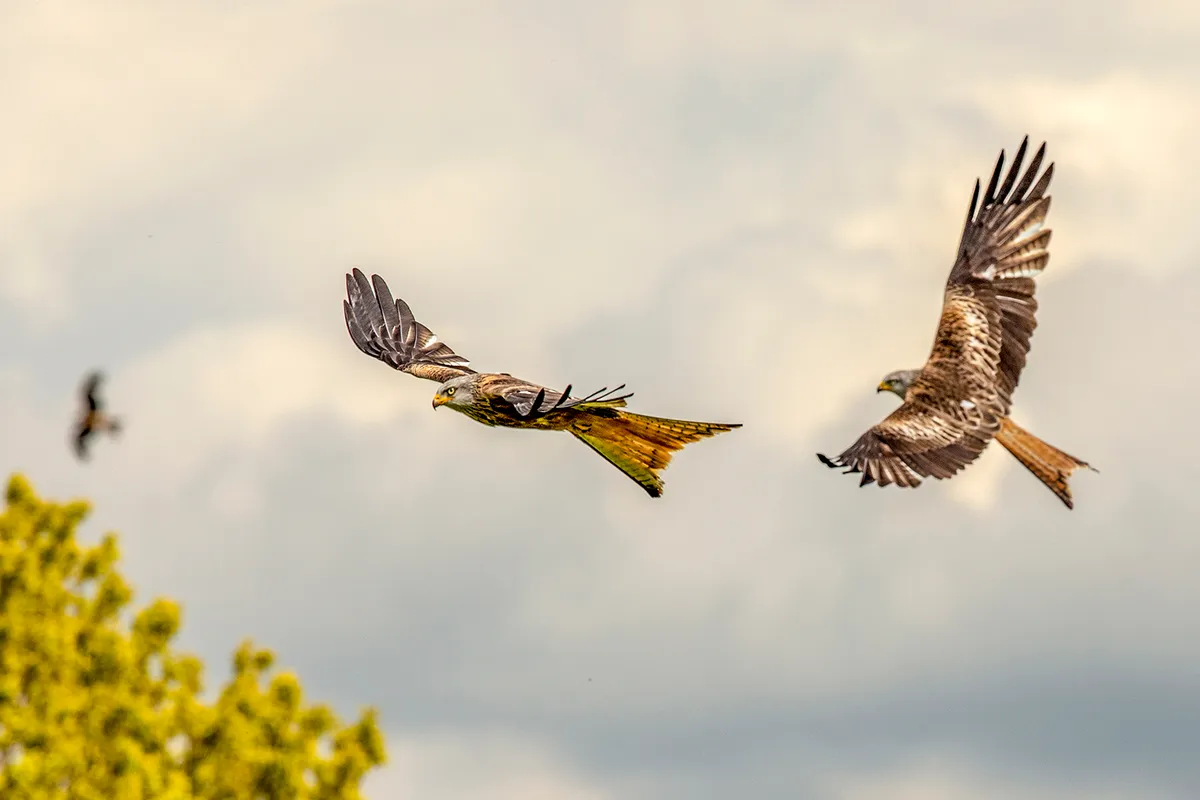It was saved from national extinction by one of the world's longest-running protection programmes. It has now been successfully re-introduced to England and Scotland and their population have gone from from strength to strength, and the red kite population is now considered to be stable.
Red kites are listed under Schedule 1 of The Wildlife and Countryside Act.
At one time confined to Wales as a result of persecution, a reintroduction scheme has brought red kites back to many parts of England and Scotland.
The best areas to find them in the Uk are central Wales, central England - especially the Chilterns, central Scotland - at Argaty and along the Galloway Kite Trail.
What is the scientific name of the red kite?
The scientific name of the red kite is Milvus milvus. ‘Milvus’ in Latin means ‘kite’.
This is an example of a tautonym, where the genus and specific name are the same.
How to identify a red kite

Red kites are a large bird of prey, with a wingspan of nearly 2m, and the females can be up to 5% bigger than the males. You can tell them apart from their fellow birds of prey by their glorious reddish-brown body and grey head.
They are sometimes mistaken for buzzards, but the main giveaway is their forked tail – their tail feathers fan out with a deep ‘v’ in the middle, creating a distinctive silhouette against the sky when they’re in flight. They also tend to soar more (like a kite!), compared to buzzards which tend to flap their wings more often.
How big is a red kite?
Red kites are about 60-66cm long, and weigh between 800g-1.3kg. Females tend to be a bit bigger, between 1-1.3kg, while males are more within the lower/mid-range, between 800 and 1.2kg.
Red kites’ wingspan can be nearly 2m long, around 175-195cm.
How to identify red kite pellets and feathers

Pellets: Red kites’ pellets are quite similar to those of a buzzard, ie large and elliptical, and made mostly of tightly packed fur with some bone fragments. To help with identification it’s helpful to look for other nearby signs to narrow the species down, such as moulted feathers or active nests.
Feathers: The tail feathers are mostly reddish brown (cinnamon colour), with the inner tail feathers sporting dark spot-like markings down the centre while the outer tail feathers have distinct barring more visible on one side of the feather.
The primaries (aka the ‘fingertip’ feathers, furthest away from the bird’s body when extended) have dark brown tips that become more and more white towards the base, quite similar to the secondaries (which run along the ‘arm’ of the wing) which become paler with bars towards the base.
What do red kites sound like?
The red kite has a buzzard-like, rapid mewing “weoo-weoo-weoo” call, often made as it’s soaring.
What do red kites eat?
Red kites are largely scavengers, living off carrion, but they have quite a varied diet including small mammals and even earthworms.
Please note that external videos may contain ads:
360° Red Kite Bird Feeding Frenzy 4k. © BBC Earth Unplugged
What eats red kites?
Adult red kites aren’t in much danger from other predators, but their chicks can be vulnerable to predation from birds including magpies, crows, or other birds of prey.
How long do red kites live for?
The oldest tagged red kite from the British Trust for Ornithology is 25 years, 8 months, and 28 days, but the average age is just 4 years.
How many eggs do red kites lay?

An average clutch has two eggs, though there are records of them having as many as four. They only have one brood a year because the chicks can take months to leave the nest. Fledging takes about 60 days, and parents continue to care for them for a further 15-20 days.
Are red kites endangered?
Red kites are now on the Green List, meaning their numbers are not considered to be under threat, but they have seen some ups and downs through the centuries. In the Middle Ages they were widespread and even protected by royal decree because they were so valued as scavengers and keeping streets clean that killing them was a capital punishment.
By the 16th century, however, they were reclassified as ‘vermin’ and persecuted by gamekeepers and by those who collected their eggs. By 1871 they were extinct in England, by 1879 in Scotland, and by the time efforts were made to protect red kites in 1903 only a few pairs were left in remote parts of Wales.
The story of the red kite’s return is now heralded as one of the conservation success stories of the UK. In 1986 the RSPB joined with the NCC (now Natural England and Scottish Natural Heritage) to find out how to bring more red kites in and help grow the population back in, and over the next decade the partnership brought more than a hundred birds over to England and Scotland from Spain, Sweden, and Germany.
These initial populations have gone from strength to strength, and red kite populations are now considered to be stable, with an estimated 4,600 pairs.
What work is being done to help red kites?

The main remaining threats to red kites are illegal poisoning by bait left out for foxes and crows, or from them eating rodents which have themselves consumed rodenticides. Collisions with power cables can also be a threat.
Their populations are strong and stable, however, so please don’t feed them – red kites travel far and wide to get their food, and with their amazing eyesight they rarely have any problem in finding dead animals and other things to eat.
Feeding red kites can cause them to cluster rather than spread naturally, and although it is very rare for a bird of prey to come close to people, they are wild animals and can become startled and try and warn people to stay away if they feel threatened.
Please note that external videos may contain ads:
Red kites in Northern Ireland: How red kites are wing tagged as part of red kite re-introduction. © RSPB
Is it true the red kites steal laundry to line their nests?
Red kites are quite the kleptomaniacs - Shakespeare even warned about their sticky-taloned tendencies in his play The Winter’s Tale, saying ‘when the kite builds, look to lesser linen’ (Act 4, scene 3). Nests have been found with everything from gloves to handbags, crisp packets, tea towels, socks, and even frilly knickers.
It’s thought that red kites decorate their nests with colourful items to advertise that a nest is in use – and laundry hung up to dry is too good to resist!
Both the male and the female work together to build the nest, usually starting with an old nest of another species and building it up together, the male collecting twigs, wool, and grass, and the female building it. Then, just before the female lays her eggs, they’ll add the final decorative touches.





